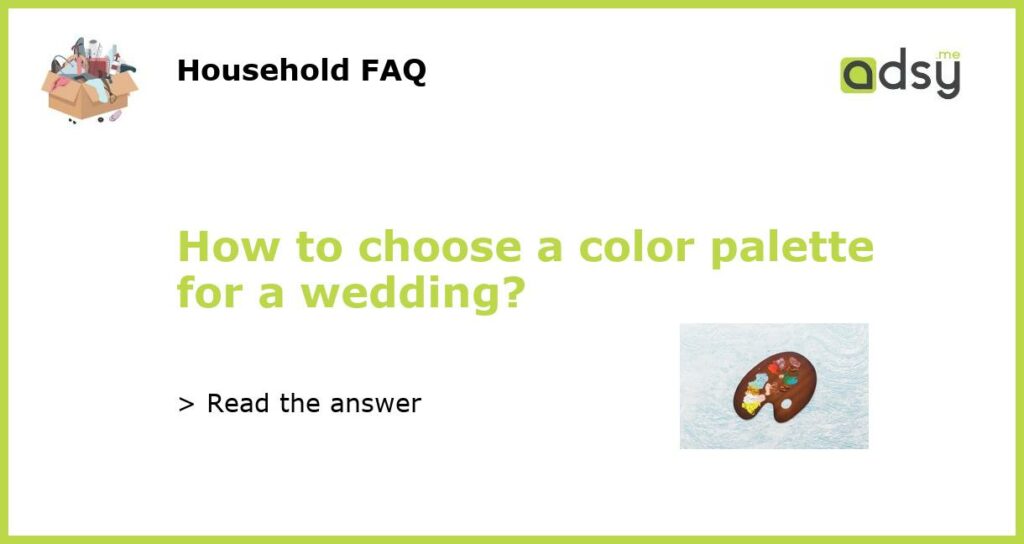Understand the Theme and Style of the Wedding
Choosing a color palette for a wedding is an exciting yet important decision. The color scheme sets the overall tone and aesthetic for the entire event, from the invitations to the decor and even the attire. To get started, it’s crucial to understand the theme and style of the wedding. Is it a classic black-tie affair or a boho-chic outdoor celebration? Knowing the essence of the wedding will help you select colors that align with the overall vibe and vision.
Take Inspiration from the Venue
The wedding venue plays a significant role in deciding the color palette. Take a close look at the space and its existing color scheme. Consider the walls, furniture, and architectural details. If the venue has a strong color presence, you might want to choose colors that complement or enhance those existing shades. On the other hand, if the venue has neutral tones, you can opt for more vibrant and contrasting colors to create a bold and striking look.
Consider the Season
The time of year the wedding is taking place also plays a crucial role in selecting the color palette. Different seasons evoke different feelings and colors, so it’s essential to choose shades that harmonize with the surroundings. For spring weddings, pastel tones like blush, lavender, and mint green are popular choices. In the summer, vibrant and bold colors like coral, turquoise, and yellow can bring energy and excitement. Cooler seasons like fall and winter call for deeper and richer hues such as burgundy, navy blue, and emerald green.
Use Color Theory
Color theory is a useful tool when choosing a color palette for a wedding. It involves understanding the relationships between different colors and their psychological effects. One popular approach is the use of complementary colors. These are colors that are opposite each other on the color wheel, such as blue and orange or purple and yellow. Complementary colors create a striking contrast and can be used to make certain elements pop. Another approach is analogous colors, which are adjacent to each other on the color wheel. These colors create a harmonious and cohesive look, such as combining shades of blue, green, and purple.
Consider Personal Preferences and Trends
While it’s important to consider the themes, venue, season, and color theory, ultimately, your personal preferences and style should be the deciding factor. Choose a color palette that resonates with you and your partner. Think about the colors that make you both feel happy and comfortable. If you have a favorite color, consider incorporating it into the palette. Additionally, keeping up with current wedding color trends can provide inspiration and help you stay updated with the latest styles. Websites like The Knot and Brides often share popular wedding color palettes and combinations that can spark creativity.






